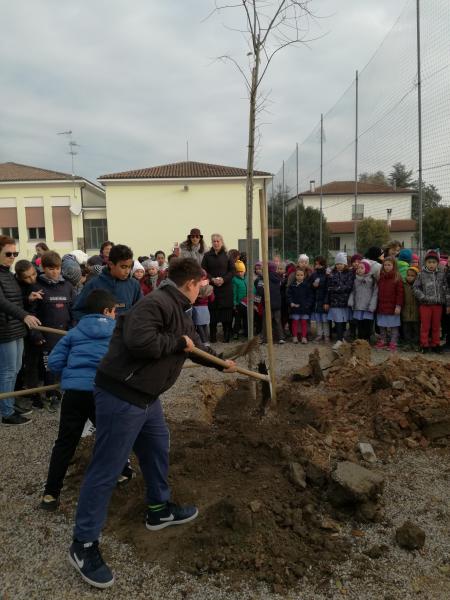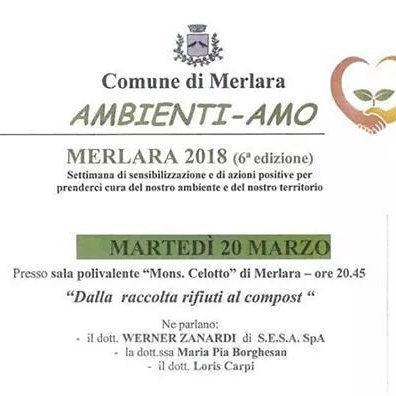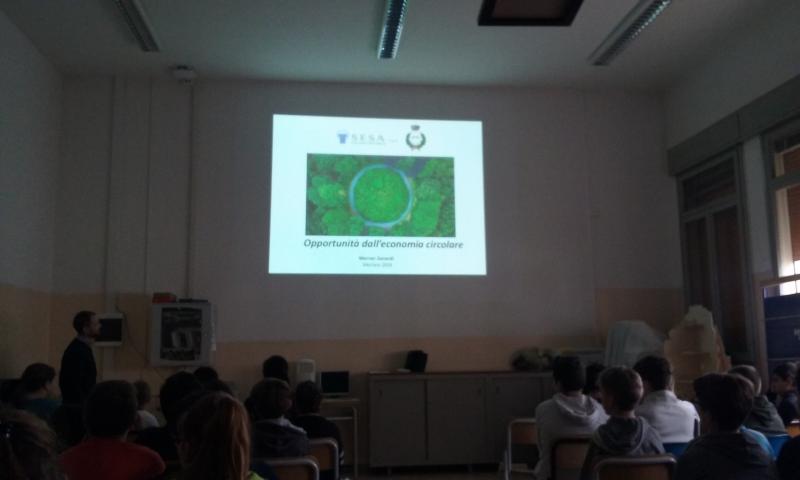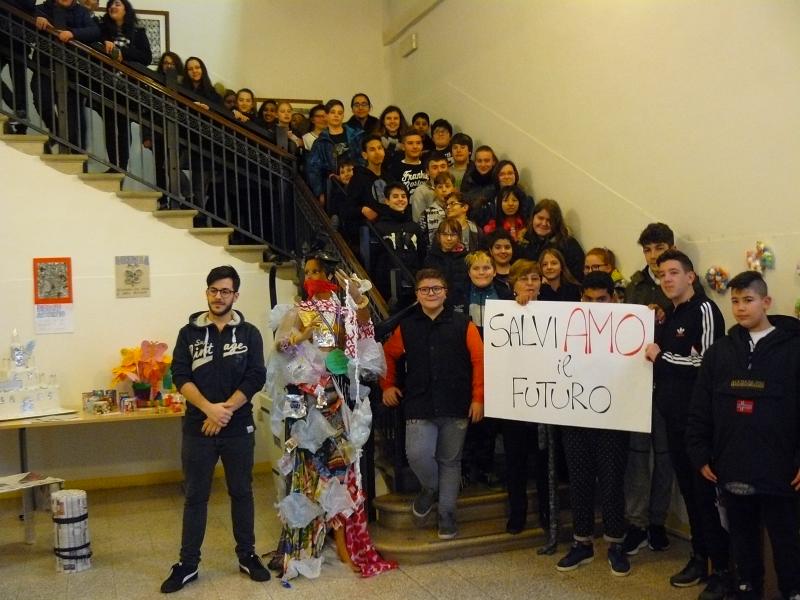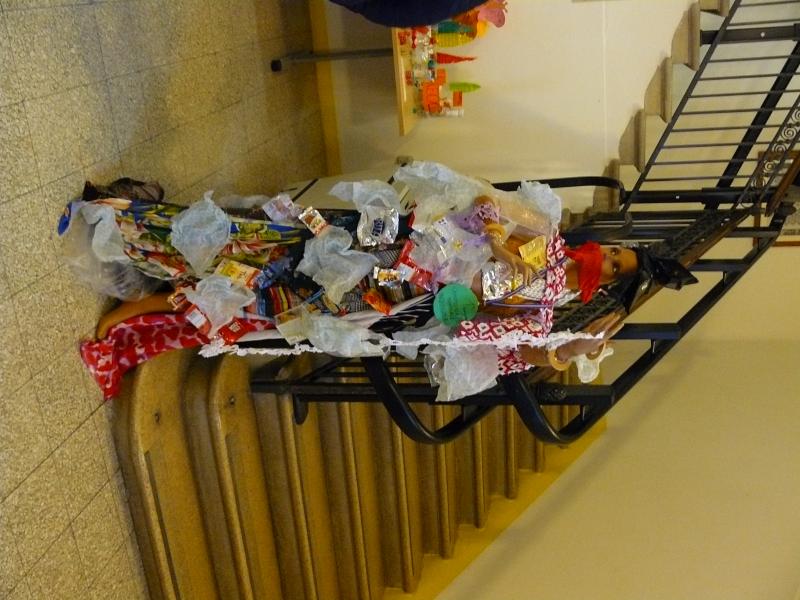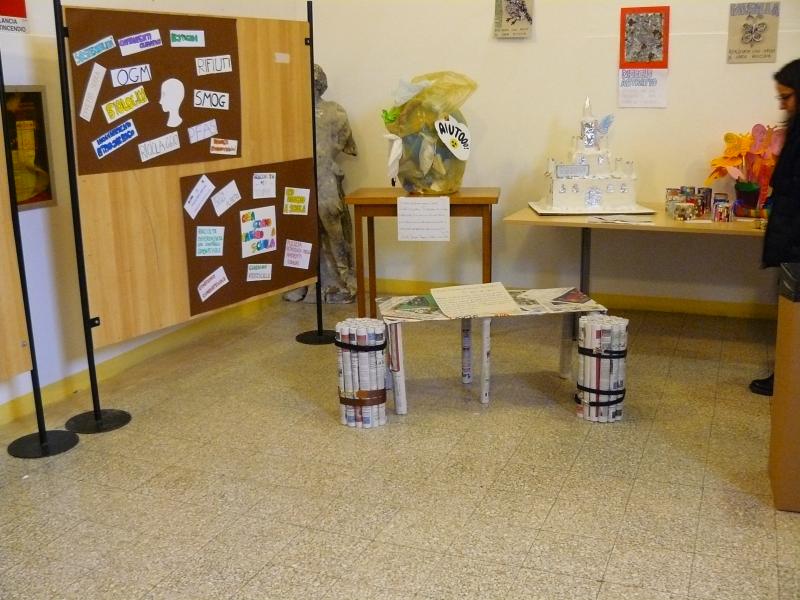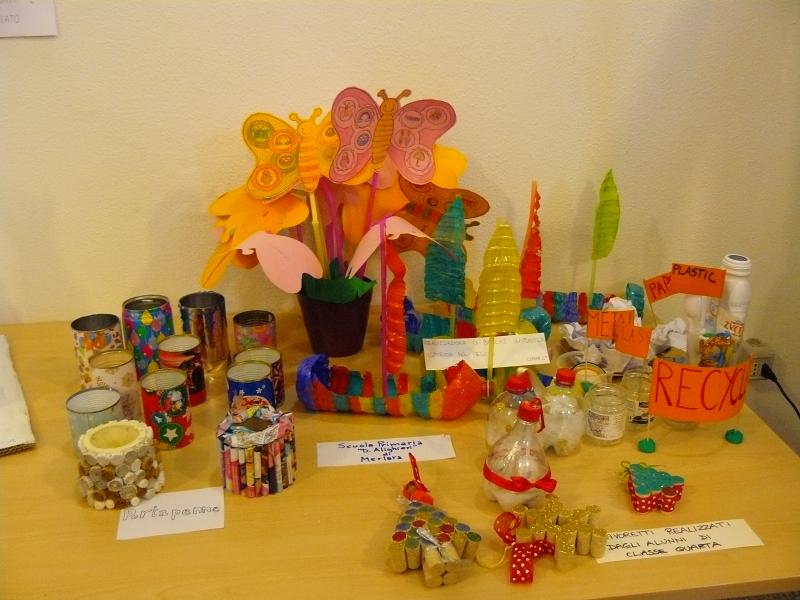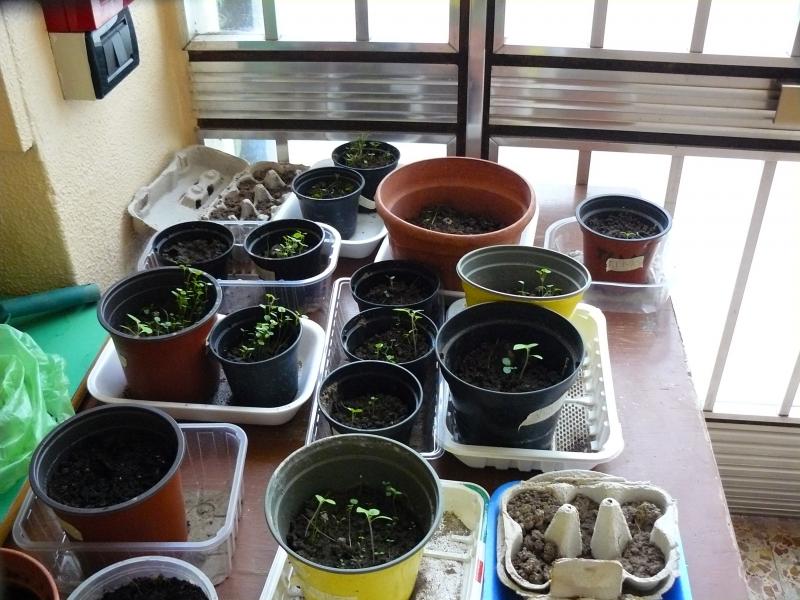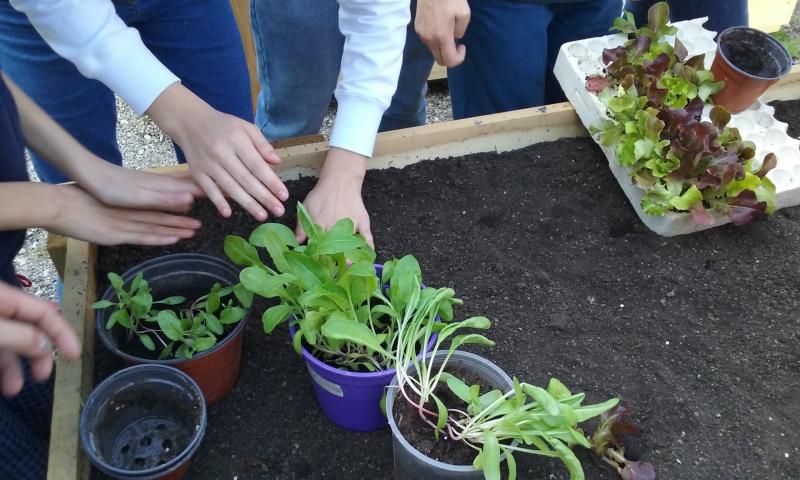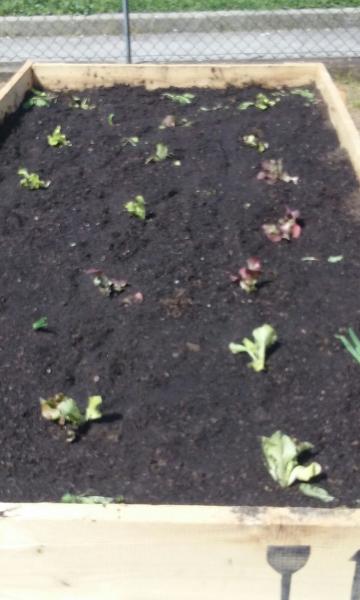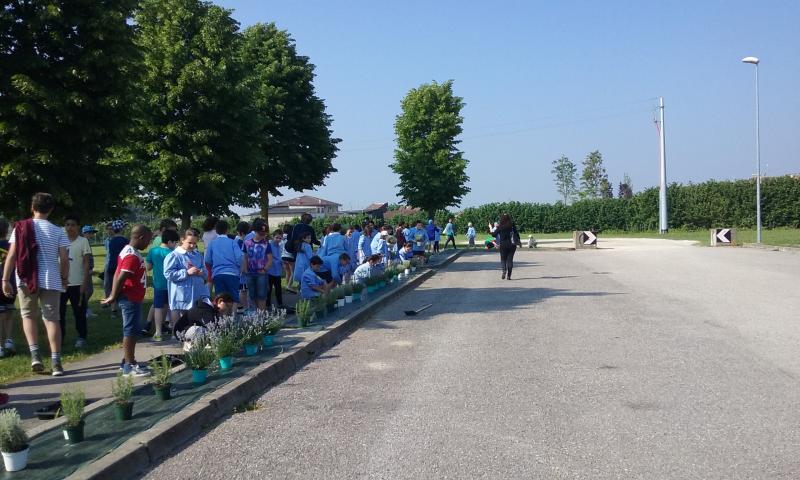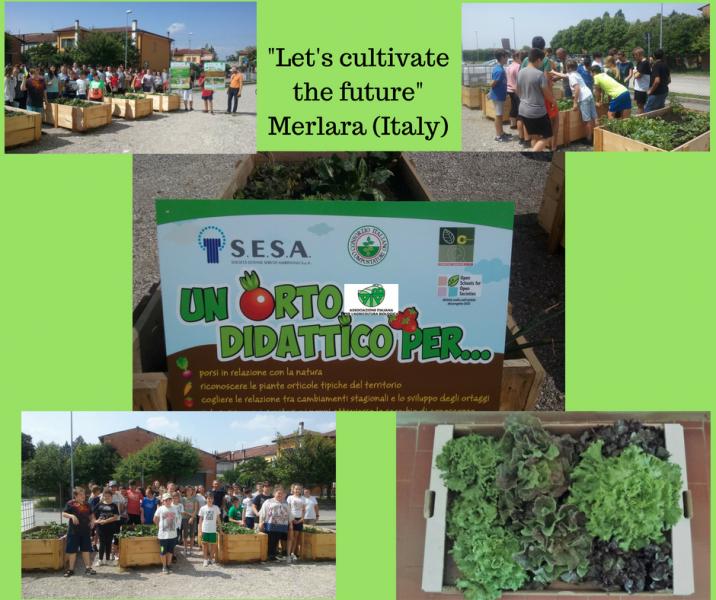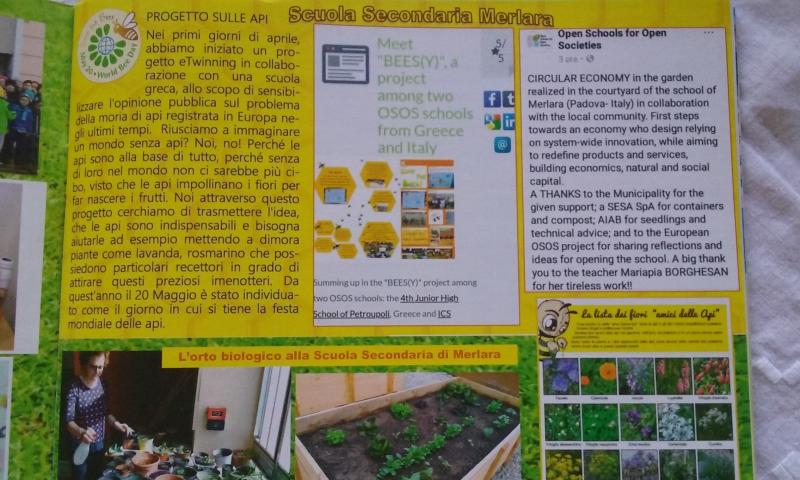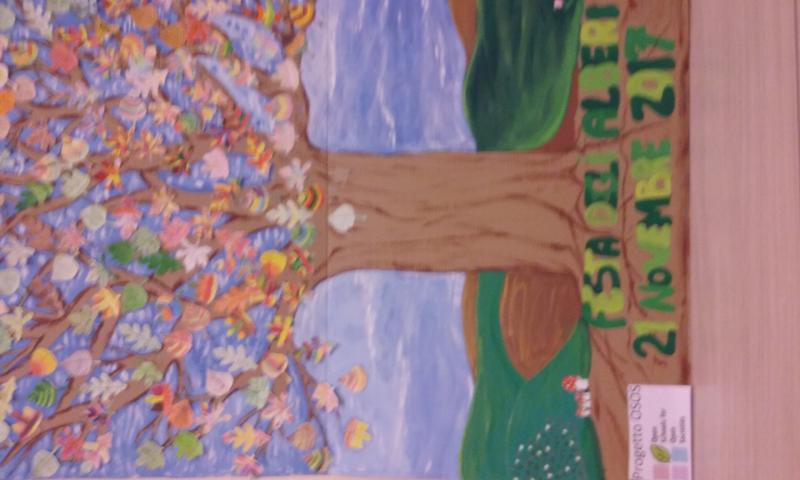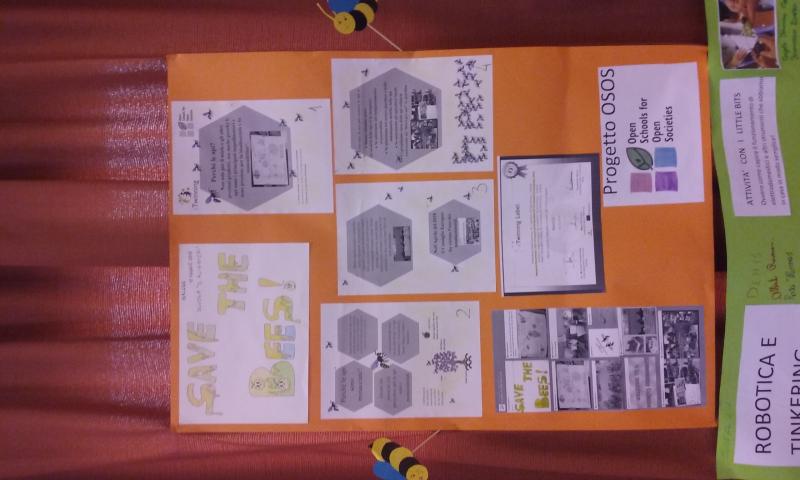
Hosted by OSOS , contributed by Mary65 on 29 March 2018
Discussing with the oldest students we have identified the polluted environment as one of the main problem of our area. After extensive reflections, the students proposed some actions to reduce pollution: plant trees, shrubs, bushes and bee-friendly flowers. Consider substainable form of agricolture such as organic farming, help the bees that are main impollinators, raise awareness about thes topics. The actions are : restore the "Tree Festival", prepare an exhibition about pollution during the eco week, set up an organic vegetale garden at school, sow and plant bee-friendly plants.
The main purpose of this OSOS accelerator is to raise interest and sensitize learners of a broad age range in (organic) school gardening experience and practice on cultivating plants and/or developing a viable agro-ecological culture. It aims to provide children with opportunities to think and act as conscious and contemporary citizens, agro-ecologists, within a viable development of societies, which grow plants organically in harmony with the environment, in respect of contemporary local and global agricultural economies and healthy eating habits. In other words, incorporating agriculture and organic gardening in the classroom helps learners understand how humans interact with the environment and how food is grown. Furthermore, agriculture and school gardening promotes awareness of a healthy lifestyle, helps learners master even demanding STE(A)M concepts, and exposes citizens to agricultural job opportunities. By designing, cultivating, and harvesting organic school gardens, children experience deeper understanding of natural systems and ecosystems and become better stewards of the earth. Nevertheless, unlike some other activities they participate in during their school years, gardening is an activity they can participate in for the rest of their lives. On a personal level, gardening builds confidence, self-esteem, and pride as children watch their efforts turn into beautiful and productive gardens. It also teaches them patience as they wait for a seedling to sprout or a tomato to ripen. Through gardening, children help to beautify the school grounds and develop aesthetic skills. The praise they receive from peers and classmates, parents, teachers, and community members will enhance responsibility, create a sense of community spirit and perhaps introduce them to the benefits of volunteering, active citizenship and community solidarity. The challenge for the teachers is to provide an adequate and didactically transposed framework of approaches on organic agriculture and organic gardening. Acting as a mentors and facilitators will investigate together with children ways of developing an organic school garden and alongside with the aid of experts and on-site study visits, design and develop such a garden. Teaching and learning activities will include investigations, experimentation and inquiry-based activities, constructions, gardening practice, open exhibitions etc. All children and school community members are to be included and participate in gardening activities, an indicative set of which is described below. Learners and teachers become passionately involved in all sorts of activities of the school garden, encouraging their interests within open (also authentic) teaching and learning environments.
We started building a school garden at the back yard of our school about 4 years ago and ever since it has become a year-round educational programme, with impact in the lives of learners, teachers, school communities and organizations. It has turned out to be a long standing commitment, which promotes innovation linked with formal, non-formal and informal teaching and learning activities, alongside with the building of open communities of practice for sharing common interests, knowledge, skills, competences and the joy of learning in the field. Indicative objectives are the following:
- to develop basic knowledge for the structure, formation and function of a(n) (organic) school garden
- to recognize basic plant categories such as groceries, aromatic plants, flowers and to discern their characteristics
- to know plants bee-friendly
- to cultivate plants in raised beds in the school garden and become young farmers connected with the food production process
- to observe and describe the development of plants in a "seed to seed" approach
- to construct smaller or bigger greenhouses and cultivate seed plants, in order to start organic gardening processes
- to take care of the plants throughout the seasons of the year and learn about the cycle of jobs that need to be done in a school garden
- to be able to confront pests and plant diseases in an organic/natural way, with simple materials and substances, without the use of conventional pesticides
- obtain deeper knowledge about organic gardening and deeper understanding of co-cultivation of plants and plants communities.
- to recognize the basic elements and advantages of organic fertilizers
- to discuss and become sensitized on the role of plants in contemporary nutrition habits
- to discuss about the energy resources of the school garden and become sensitized on water preservation issues
- to write stories experiences about the garden
- to make artifacts, paintings and art about school gardening
- to develop active citizenship and solidarity though voluntary work in the school garden and with the sharing of garden crops with fellow citizens ... etc
This is an (inter)thematic/interdisciplinary topic/OSOS accelerator, which interweaves nearly all subject domains of formal, non-formal and informal education, ranging from Science, ICT, Mathematics, Technology & Engineering to Language, History, Arts, Physical Education etc.
|
CONTACT PEOPLE:
|
ORGANIZATION IN CHARGE:"IC Sculdascia" Casale di Scodosia -primary and lower secondary school of MERLARA (Italy)
|
Feel



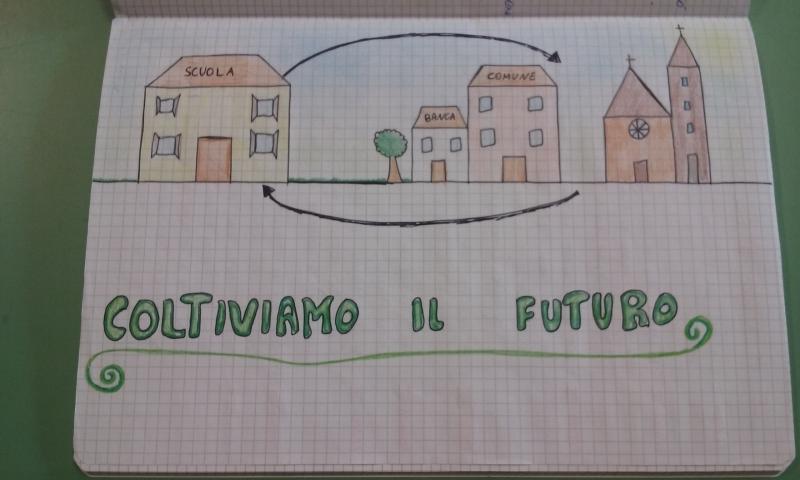
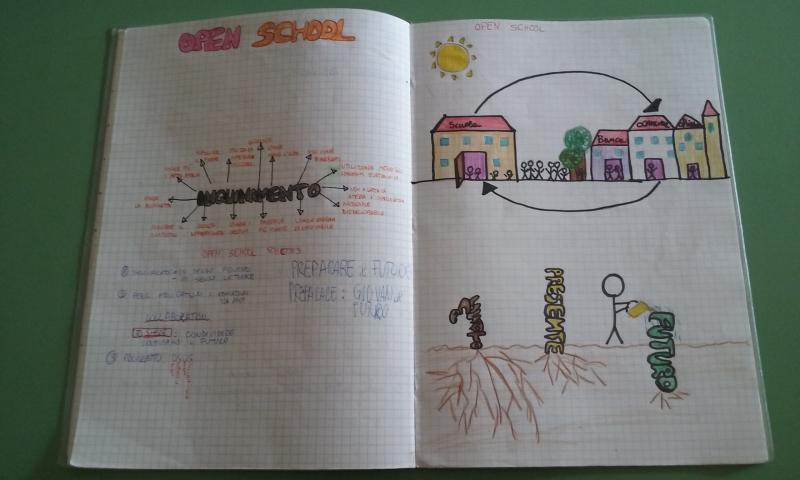
We reflected about our country and we decided that pollution is our biggest problem. We planned several activities to reduce it. Some activities are for all the students, others are only for the oldest one. Activities are:
-plant trees
-prepare materials for an exhibition during the eco-week organized by the local administration
-sow and cutivate plants
-set up a school garden
-raise awareness about bees and their problems
Students in 3A classroom also made an eTwinning project with students in Petropouli (Greece), another OSOS school about Bees.
A school garden, needless to say an organic school garden, offers a place to enrich teaching efforts with powerful hands-on activities and experiences that make learning come alive, ideas and concepts come into being. Developing a school garden is not rocket science, neither a “build-it-and-it-will-come” endeavor, but rather an exercise which presents a certain level of complexity and must be “child-generated” in order to be “child-owned”. If children lack ownership, they will lack a sense of stewardship. Sustainability requires stewardship. If the garden is to be used, respected and cared for, then stewardship is the key for the whole community. The foundation of success is not necessarily in proper construction or sound plant selection. Although these are important dimensions of successful organic gardening, it appears that it is not so much the garden, but rather the garden programme and the integrated activities that matter and make the difference, raise the educational added value. Successful (organic) school gardens are built on the foundation of committed people, bearing in mind that although “there might not be a garden in every school, but there is definitely a school in every garden”.
“Garden-based Learning” [GBL], within a context of “Inquiry-based Science Education” [IBSE], can be defined simply as a set of instructional strategies that utilize a garden as a teaching and learning tool. The pedagogy is based on experiential education, which is practiced and applied in the living laboratory of the garden. Moreover, GBL has the potential to enrich basic education in all cultural settings. In cases where it is most effective, GBL is a pedagogy that is used with all children. It has something to contribute to each learning style, and to children at each developmental level. Garden-based learning offers a context for integrated learning. An integrated curriculum is often associated with real-life problems in contrast with a traditional subject–based curriculum. This provides a vehicle for higher order thinking skills as students are challenged to move beyond memorization, to see patterns and relationships and pursue a topic in depth, within a thematic approach. They are engaged in actively and socially constructing and construing knowledge, rather than passively accumulating and accepting information and they also develop analytic and synthetic thinking. At the practical level developing GBL skills raises the importance of (organic) gardening practice, through which children gain firsthand experience with the seed-to-seed cycle, the rhythm and traditions of the harvest, and the taste, touch, and smell of fruits, vegetables, and flowers. Proponents of children’s garden programs talk of the multiple developmental benefits that school gardens can have on children namely, emotional, aesthetic, and even spiritual in addition to the more obvious social and intellectual benefits, in a variety of contexts.
The (indicative) activities proposed/conducted for this OSOS accelerator are physically placed at the school garden (in situ), but also in the networks/communities of people surrounding them (in vivo), as well as in the workspace of the connected virtual environments they are linked with (in vitro).
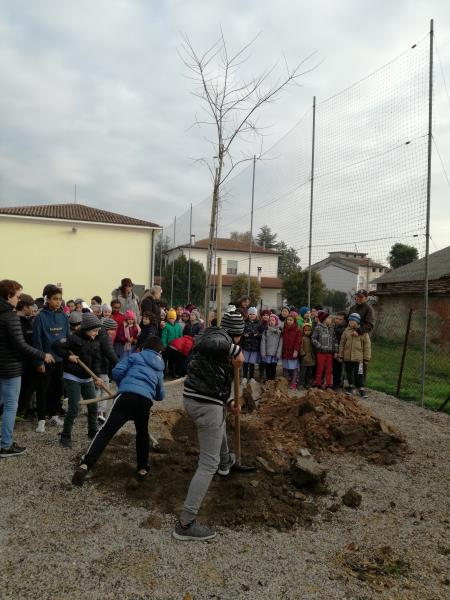
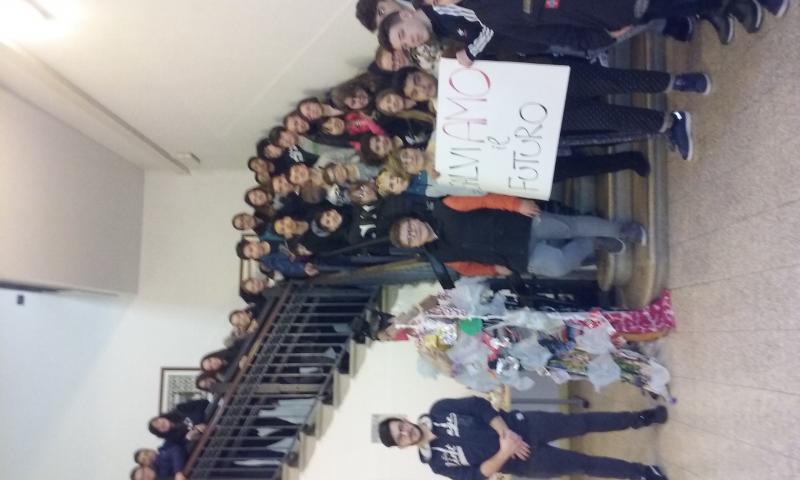
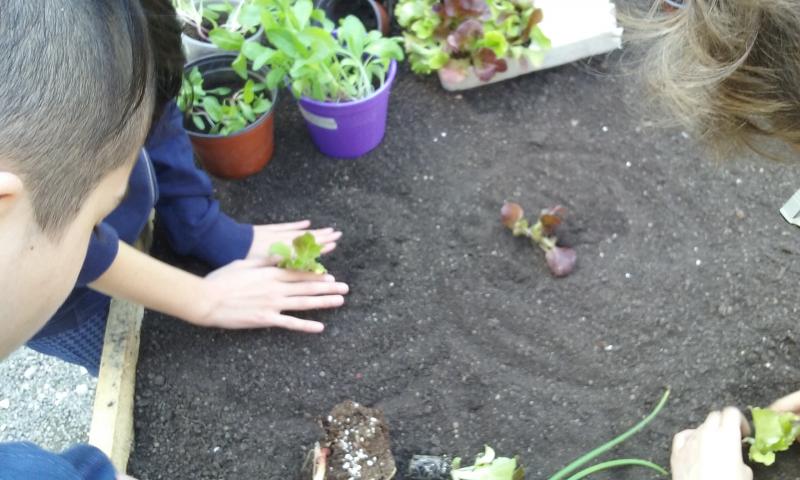
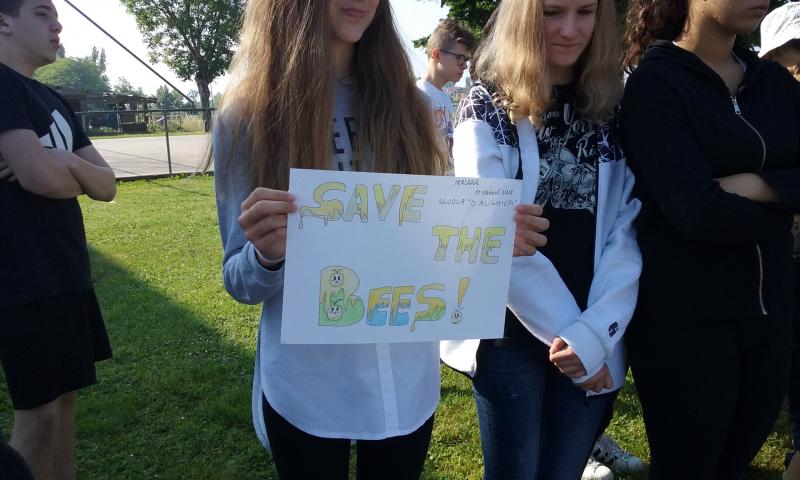
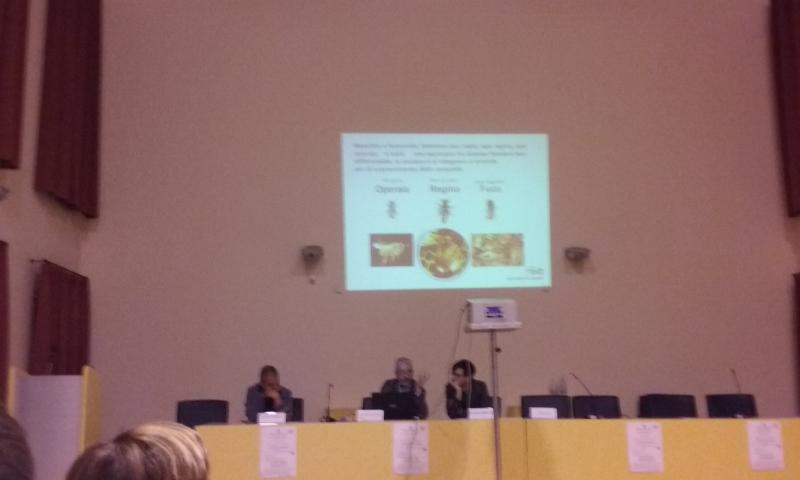
Imagine
Celebrate the Tree Festival is an opportunity to involve local administration and parents. We dec ide to plant 3 trees in the schoolyard. We invited people from our villagwe to take part in this activities. Students were really inolved and liked the idea.
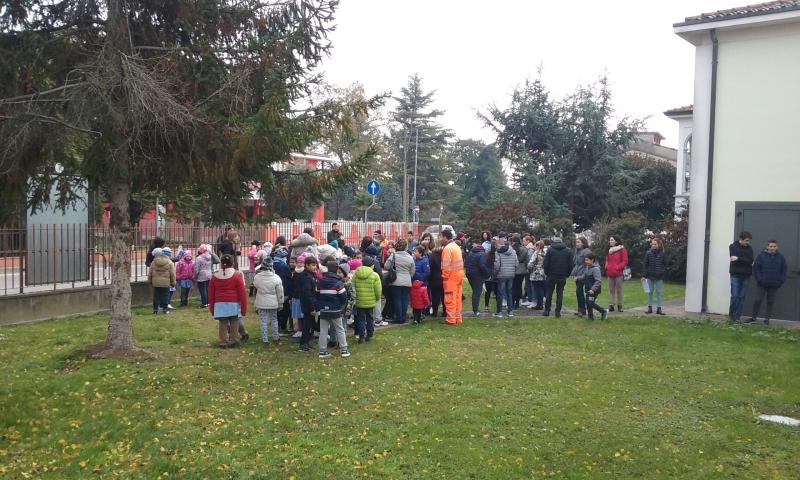
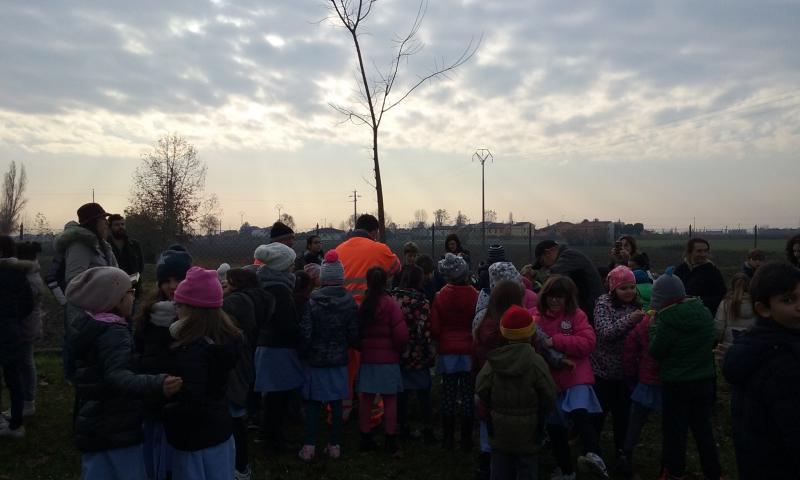

Designing a school garden has been a challenge for the school community, which involved us in a series of creative problem solving activities, like the kind of structure of the garden, the design and arrangement, the materials used, the teaching and learning activities we could involve the children in the development of the process etc.
After extensive research, discussions, advice of experts and estimations of cost, we decided to build up a school garden in the “raised beds gardening” idea Raised beds are popular because they are relatively easy to build, plant, weed, and maintain.We had a great support by a local industry: SESA SpA (http://www.sesaeste.it/ ) who made the wooden beds. They gave us 4 wooden beds, compost amd more. Since the soil can drain sooner and warm up faster in spring, they also enable us to plant earlier in the season. Moreover, children can work ergonomically, because they do not need to bend and hurt their spine and knees, whereas they can grow plants easier in a much more controllable setting. together with a two-volume spaced compost chamber. AIAB (Association for organic agricolture, https://aiab.it/ ) support us during the work. We decided also to plant flower that bees love in our courtyard.
Create
A list of indicative activites for this accelerator is presented below:
|
# Session |
Duration |
Description |
Resources needed |
Location |
|
1 |
60 m |
Activity 1: Introducing the course, forming groups of students and groups of supporters Brainstorming in the classroom and formation of spider diagrams on the white board and/or on paper in order to identify children’s ideas and preferences about gardening and organic gardening products and options. The spider diagrams may become classroom posters in another crafts teaching hour. The children start forming groups and start having ideas of investigation. They discuss their assistance resources from other teachers, parents and/or experts. Groups of volunteers formulate to support the gardening projects. |
|
Classroom |
| 2 | 90 m | Activity 2: Celebrate Tree Festival |
|
classroom/school garden |
| 3 | 90m |
Activity 3: Presenting the project to the local community ( during the "eco-week") 20th March: Mariapia Borghesan and a rapresentant form the local administration and another from SESA present the project to the community. |
|
City hall |
|
4 |
90 m |
Activity 4: Retrieving information and initial planning activities Children visit the School Computer Laboratory and perform research activities using search engines with key words like: gardening, school gardens, organic gardening, organic products, cultivating plants etc. Children are also introduced and navigate in relevant educational portals, sites, wikis and blogs(WebQuests). Pieces of the retrieved information are discussed and checked for their validity and then saved and/or print out for further elaboration. Back in class or in the Science Laboratory, the information is discussed and ideas about possible activities in the school garden are encouraged to arise. The possibilities and constrains of the school garden to become organic are also introduced. A need for more information and assistance of experts is expected to arise, in order to provide foreground for the following activity.
|
|
Classroom and/or School Garden |
|
5 |
60 m |
Activity 5: Inviting experts in school to talk about organic gardening After studying the relevant information retrieved during the previous activity, the children list questions about organic gardening and organic practice in the school garden, which they would like to ask an expert. Two experts an experienced organic farmerand and an agriculturalists are invited to school in conference session to be attended by children . Children ask their questions to the experts. We established collaboration with these experts (Stefano Bianchi and Paolo Steccanella from AIAB, Werner Zanardi fron SESA) |
|
Classroom and/or School Garden |
| 6 | 180 m | Activity 6: Organize an exhibition in the local city hall |
|
City Hall |
|
7 |
90 m |
Activity 7: Reconsidering and listing (organic) garden project activities After having elaborated all available information so far children may compare their latest ideas with initial ones and reform some of them, reject others and add new ones. The main task of this process is to create a list of activities to be conducted in the school garden, whereas some ideas of making an organic garden are expected to emerge with the aid and intervention of the pedagogue. This list of activities to take place may be an indicative one and certainly not a finite one, since other activities may be incorporated as the project develops. Group work is also distributed according to pupils’ interests and further investigation is planned. Assistance from supporters, volunteers and/or experts is also included in the picture. Start a dynamic, on-going concept map to include acquired information and transform it as the information load increases and new links are formed between concepts and well as cross-links between clusters of concepts in order to enhance meaningful learning. This concept map will develop during the course of the project as additional concepts and/or clusters will be added and modified, it the form of an on-going formative assessment of the whole process. Later on, these concept maps can be reconsidered and transferred to a computer software application |
|
Classroom |
|
8 |
180 m |
Activity 8: Studying the garden soil – the root of it all and start thinking organically A major issue in organic gardening is the preparation of soil, especially the last 10 cm in a raised beds garden arrangement. The basic principle might sound simple as it is “feed the soil in order to feed back the plants for you”. Thus, the main research question that arises is how to “feed” the soil and moreover how to “feed” the soil organically? The main scope of organic gardening is to improve “living soil” with its myriad of microbes and earthworms, rather than degrading it by saturating it with artificial and frequently toxic chemical fertilizers. Soil should be viewed and thought of as a “living organism” and not as a sum of a few unrelated and separate parts. When plants are grown conventionally, petro-chemical fertilizers are used to “feed” the plant directly, which can result in excessive growth and poor cell structure, which in turn can increase the attack of insects. With organic growing, organic matter and natural minerals in the soil “feed” the soil micro-flora and worms. They in turn “feed” the plants by releasing the essential nutrients that the plants need. This provides sustained, regular growth and strong cell structure. The novice gardeners, children in particular, must be patient enough because it takes time for soil fertility to build up and a balanced ecology to develop, alongside with possible insect damages and crop failures in the early stages. These ideas on organic soil basics constitute a framework for experimentation, discussion and development of arguments. Children may study different soil samples and also grow plants in them to realize substantial distinctions. |
|
Classroo/School Garden |
|
9 |
180 m |
Activity 9: Growing seeds in seed-starting pots and trays It is important for organic gardening to start with seed-plants to be transplanted in the raised beds at later stage, or at least this appears to be a basic phase of the process of an “organic certification” of produced crops, at least in case such a certification is intended. The various starting containers should be selected to suit the needs of the varieties to be grown. Commercially available flats, seed-starter trays, cell-packs, peat-pots, and flower pots as well as plastic-foam or paper cups and aluminium baking trays are typical containers. Each container should have adequate drainage for the plant roots not to rotten. If containers have been used previously, they have to be cleaned with a mild bleach solution to prevent the spread of plant diseases. A light-weight sterile seedling mix should be chosen to start the seeds, usually mixed with enough water to moisten. It is then used to fill the 2/3 of the containers and plant the seeds. Using for example seed-starter trays, small vegetable seeds should be sown in rows, usually in at a rate of eight to ten seeds every 3 cm or so. Row indentations are made about 1 cm deep with a label or pencil and the seeds are sprinkled evenly in the rows. Then the seeds are covered with the potting mix and pressed lightly to ensure contact between the seeds and the soil. These, for instance, are practical activities, which may have not been performed before by the majority of the children, even from those who grow up in rural areas nowadays. The children continue to work in groups of four and plant their seeds in the various containers. The selection of seeds to be planted is an important and serious issue that needs to be discussed in class and identify the respective resources to obtain local varieties of seeds as well as organically developed ones. After the seeds are put in the containers they are to be transferred to the greenhouses to grow in a protected environment. |
|
School |
|
10 |
60 m |
Activity 10:Putting the young plants in the raised beds The most important reasons to grow organically vegetables and seasonal fruits in raised beds are because they:
Moreover, the plants arrangement can be an easy and playful activity for children, provided they keep some standard geometrical distancing rules that various plants need to grow in raised beds. They can easily be protected from bad weather conditions by sheltering the plants using various easy techniques and simple materials and they can easily be turned into small greenhouses conditions demanding (see drawings aside). The children continue to work in groups of four and take the seed-plants from the greenhouses and transplant them in the raised beds. An important issue at this stage is the combination of plants to be put in each raised bed in order one to attract “useful insects” for the others,for instance and to grow up in harmony and organically. Information and advice from experts as well as facilitation from pedagogues, supporters and practitioners is to be sought at this stage. |
|
School Garden |
|
11 |
15 m x day |
Activity 11: Nurturing the plants and keeping them healthy When plants are established in the raised beds, it appears to be a good time for some more formal pieces of information about the nature and functioning of plants to come into the picture, alongside with a harmonic nurturing by the children. Thus, the root system, the leaves and branches, the flowers and fruits as well as the concepts and processes of photosynthesis, respiration and transpiration, units usually found in most primary and early secondary science curricula can be taught formally in the science laboratory as well as in the school garden, which may now act as a live learning site and exhibit mainly manipulated by children with an increased sense of commitment and stewardship. In this sense, teaching and learning activities become more interesting and apt, situated in a long created, non-threatening and highly familiar environment. At the practical level children will have to learn how to nurture their plants and how to deal with insects and diseases organically. The need of expert assistance and pedagogical facilitation is rather apparent at this stage and needs to be provided adequately, in order to implement some difficult and demanding pieces of knowledge and traditional practice, didactically transposed in a way to fit the level of the organic school garden approach. |
|
School Garden |
|
12 |
45 m x 10 days |
Activity 12: Bees as pollinators We established an eTwinning project with an OSOS Greek School. We study bees and their important role in the pollination. We exchanges honey and seeds.
|
|
Classroom |
| 13 | 120 m |
Activity 13: Collaborate to organize a conference about bees We collaborate with the local administration and prepare a conference about bees in the local public house. Students prepare paper bees and give them to the persons to raise awareness about bees need help. The Major gave to every partecipant a bee friend plant. |
|
city hall |
| 14 | 120m |
Activity 14: Plant 70 flowers that bees love in a flowerbed in the school courtyard The Major helped us and gave us more than 70 plants. We palnt them in the school yard. |
|
flowerbed in the school parking |
| 15 | 60 m |
Activity 15: Conclusion We invited expert and discuss about the results of our projects. We pick up our vegetables and take them home to eat . |
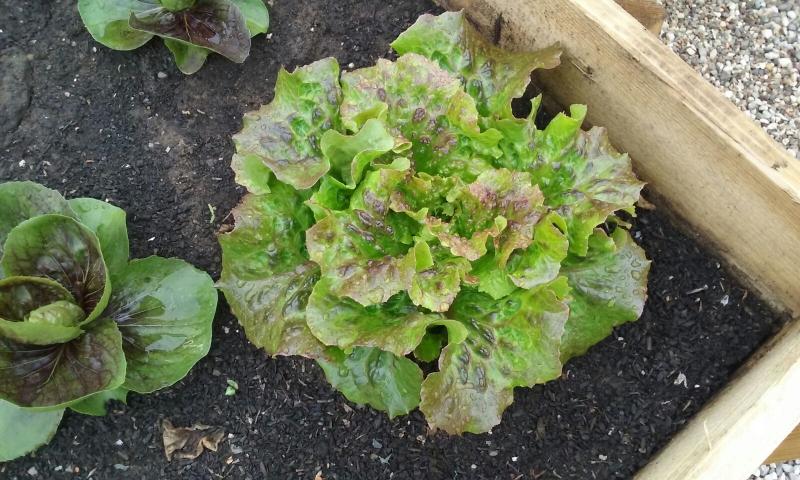 |
classroom/school garden |
